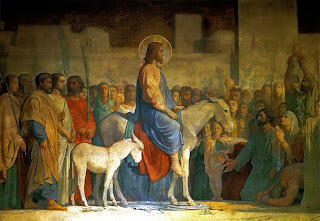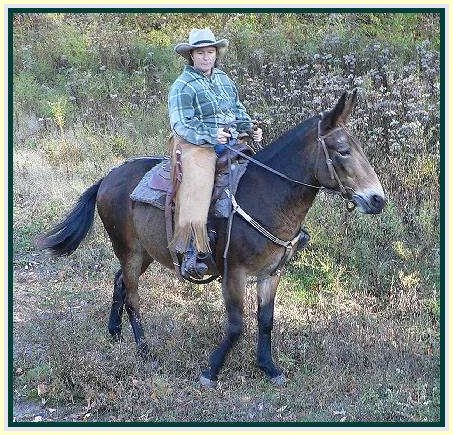
One popular idea is that there exists a distinction between two different modes of relating with the divine or the sacred: religion and spirituality. Religion describes the social, the public, and the organized means by which people relate the the sacred and the divine while spirituality describes such relations when they occur in private, personally, and even in eclectic ways.
Is such a distinction valid? In answering such a question, it is important to keep in mind that it presumes to describe two fundamentally different types of things. Even though I describe them as different ways of “relating to the divine or the sacred,” that is already introducing my own prejudices into the discussion. Many (if not most) of those who attempt to draw such a distinction do not describe them as two aspects of the same thing; instead, they are supposed to be two completely different animals.
Religion vs. Spirituality
One clue that there may be something problematic in this distinction comes when we look at the radically different ways in which people actually try to define and describe that distinction. Consider these three definitions drawn from the internet:
Religion is an institution established by man for various reasons. Exert control, instill morality, stroke egos, or whatever it does. Organized, structured religions all but remove god from the equation. You confess your sins to a clergy member, go to elaborate churches to worship, told what to pray and when to pray it. All those factors remove you from god. Spirituality is born in a person and develops in the person. It may be kick started by a religion, or it may be kick started by a revelation. Spirituality extends to all facets of a person’s life. Spirituality is chosen while religion is often times forced. Being spiritual to me is more important and better than being religious.
Religion can be anything that the person practicing it desires. Spirituality, on the other hand, is defined by God. Since religion is man defined, Religion is a manifestation of the flesh. But Spirituality, as defined by God, is a manifestation of His nature.
True spirituality is something that is found deep within oneself. It is your way of loving, accepting and relating to the world and people around you. It cannot be found in a church or by believing in a certain way.
These definitions aren’t just different, they are incompatible! Two define spirituality in a way which makes it dependent upon the individual — it is something that “develops in the person” or is “found deep within oneself.” The other, however, defines spirituality as something which comes from God and is defined by God while religion is “anything that the person desires.” Is spirituality from God and religion from Man, or is it the other way around? Why such divergent views?
We can better understand why such incompatible definitions (each representative of how many, many others define the terms) appear by observing what unites them: the denigration of religion. Religion is bad. Religion is all about people controlling other people. Religion distances you from God and from the sacred. Spirituality, whatever it really is, is good. Spirituality is the “true” way to reach God and the sacred. Spirituality is the right thing to center your life on.
t’s popular, especially in America, to distinguish between spirituality and religion. It’s true that there are valid distinctions between the two, but there are also a number of problematic distinctions which people try to make. In particular, supporters of spirituality tend to try to argue that everything bad lies with religion while everything good can be found in spirituality. This is a self-serving distinction which only masks the nature of religion and spirituality.
Problematic Distinctions Between Religion & Spirituality
One principal problem with attempts to separate religion from spirituality is that the former is saddled with everything negative while the latter is exalted with everything positive. This is a totally self-serving way of approaching the issue and something you only hear from those who describe themselves as “spiritual.” You never hear a self-professed religious person offer such definitions and it's disrespectful to religious people to suggest that they would remain in a system with no positive characteristics whatsoever.
Another problem with attempts to separate religion from spirituality is the curious fact that we don’t see it outside America. Why are people in Europe either religious or irreligious but Americans have this third category called “spiritual”? Are Americans special? Or is it rather that “distinction” is really just a product of American culture?
In fact, that is exactly the case. The term itself came to be used frequently only after the 1960s when there were widespread revolts against every form of organized authority, including “organized religion.” Every establishment and every system of authority was thought to be corrupt and evil, including those which were religious — but of course, Americans weren’t prepared to abandon religion entirely. So, they created a new category which was still religious, but which no longer included the same traditional authority figures.
They called it Spirituality. Indeed, the creation of the category “spiritual” can be seen as just one more step in the long American process of privatizing and personalizing religion, something which has occurred constantly throughout American history.
It's no wonder that courts in the America have refused to acknowledge any substantive difference between “religion” and “spirituality,” concluding that “spiritual” programs are so much like religions that it would violate the separation of church and state to force people to attend them (as with Alcoholics Anonymous, for example). The religious beliefs of these “spiritual” groups do not necessarily lead people to the same conclusions as organized religions, but that doesn’t make them less religious.
Valid Distinctions Between Religion & Spirituality
This is not to say that there is nothing at all valid in the concept of spirituality — just that the distinction between spirituality and religion in general is not valid. Spirituality is a form of religion, but a private and personal form of religion. Thus, the valid distinction is between spirituality and organized religion.
We can see this in how there is little (if anything) that people describe as characterizing spirituality but which has not also characterized aspects of traditional religion. Personal quests for God? Organized religions have made a great deal of room for such quests. Personal understandings of God? Organized religions have relied heavily upon the insights of mystics, although they have also sought to circumscribe their influence so as not to “rock the boat” too much and too quickly.
Moreover, some of the negative features commonly attributed to religion can also be found in so-called “spiritual” systems. Is religion dependent upon a book of rules? Alcoholic’s Anonymous describes itself as spiritual rather than religious and has such a book. Is religion dependent upon a set of written revelations from God rather than a personal communication? A Course in Miracles is a book of such revelations which people are expected to study and learn from.
It is important to note the fact that many of the negative things which people attribute to religions are, at best, features of some forms of some religions (usually Judaism, Christianity, and Islam), but not of other religions (like Taoism or Buddhism). This is perhaps why so much of spirituality remains attached to traditional religions, like attempts to soften their harder edges. Thus, we have Jewish spirituality, Christian spirituality, and Muslim spirituality.
Religion is spiritual and spirituality is religious. One tends to be more personal and private while the other tends to incorporate public rituals and organized doctrines. The lines between one and the other are not clear and distinct — they are all points on the spectrum of belief systems known as religion. Neither religion nor spirituality is better or worse than the other; people who try to pretend that such a difference does exist are only fooling themselves.
Religion & Spirituality
Is Religion Organized Spirituality? Is Spirituality Personalized Religion?
By Austin Cline









































